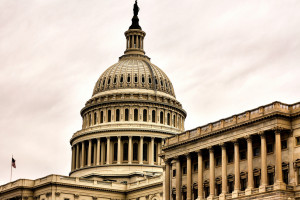Builders and contractors may be interested to learn that, in the past few days, the Supreme Courts of Texas  and Colorado, and the U.S. Court of Appeals for the DC Circuit have issued significant rulings addressing the separation of powers at the state and federal level.
and Colorado, and the U.S. Court of Appeals for the DC Circuit have issued significant rulings addressing the separation of powers at the state and federal level.
An Ordinance’s Overreach
On April 29, the Supreme Court of Texas, in BCCA Appeal Group, Inc. v. City of Houston, Texas, held, in an 8 to 1 ruling, that the Texas Clean Air Act (TCAA) and the TCAA’s enforcement mechanisms imbedded in the Texas Water Code preempt a City of Houston ordinance that required emissions-emitting facilities located within the city limits to register their facilities with the City of Houston, and to pay registration fees. Although the TCAA expressly provides that municipalities like the City of Houston can pass air quality ordinances, the Court noted that they cannot pass local laws inconsistent with the TCAA and the Texas Commission on Environmental Quality’s (TCEQ) enforcement policy and procedures. Indeed, the City of Houston’s ordinance makes unlawful what the TCAA allows. While the ordinance expressly incorporated the air quality rules of the TCEQ, this was not enough to save the ordinance from being invalidated to the extent that registration was required that could result in criminal enforcement by the City of Houston. The consequences of this decision may result in a concentration of air quality enforcement authority in the TCEQ, and cities in Texas will need to exercise caution in promulgating local ordinance that could conflict with state policy.
Continue Reading ›
 Our clients asked and we responded. From planning to disposition, Pillsbury’s Development Life Cycle Map illustrates the capabilities of Pillsbury attorneys to represent clients as they face eleven key stops along The Path. Designed as a quick reference, our Development Life Cycle Map is available in hard copy and digitally.
Our clients asked and we responded. From planning to disposition, Pillsbury’s Development Life Cycle Map illustrates the capabilities of Pillsbury attorneys to represent clients as they face eleven key stops along The Path. Designed as a quick reference, our Development Life Cycle Map is available in hard copy and digitally.








